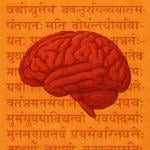This joker – Zakir Naik – is answering an “aggressive” question of a “Hindu Brother”.
Here are the two points that the questioner made that he talks about:
1. How the Muslims differentiate between Believers and Non-believers and the treatment.
2. How Muslims emphasize on killing of people – non-believers – and animals and so are inherently a violent lot.
So how does this guy answer this question?
1. Believers and Non-believers: Every religion has believers and non-believers. So, how is Islam different? Well, the difference is pretty simple. In the way the non-believers are judged – in the eyes of the believers and their “God” and “Prophet”! Here are the examples of what is to be done with the Non-believers:
– 2:191, And slay them wherever ye catch them
– 3:28, Let not the believers Take for friends or helpers Unbelievers rather than believers: if any do that, in nothing will there be help from Allah
– 4:141, And never will Allah grant to the unbelievers a way (to triumphs) over the believers
Its not that in Islam the humanity is divided into two – believers and non-believers.. but how the non-believers are treated. That is the major difference. Any one who goes out to “convert” does have an inherent assumption that my belief is better than yours and yours is useless.
Moreover, no one ever “created” Hinduism. So, there was no one who could say what should a “Hindu” do or not do! Every saint or Rishi explained what his or her teachings meant and how they could benefit those who believed in them. Now, the same or similar belief could and was taught by many in different hues, which did not make anyone so different from followers of any Saint. So, the mess of one person being the “benchmark” over the rest never arose!
2. Vegetarianism: He discusses the following thing about non-vegetarianism:
(i) Human teeth make humans both carnivorous and herbivorous. That is wrong. As this link also explains, human teeth are more similar to herbivorous animals as opposed to carnivirous. We do have canines but they are for biting rather than killing – which is what the sharp teeth of the carnivorous animals are for. Our flat teeth in the front and the back – which, by the way, are in the majority, are to be used for chewing and not killing.
(ii) DIgestive system of humans is similar to the carnivorous animals: Another lie. All carnivorous animals kill their food and swallow more than they “eat”. That is why their intestines are smaller.
The human intestine is not designed to digest meat. While a natural carnivore’s intestine is relatively short (3 times the length of its body) and smooth inside, a human’s intestine is proportionally 4 times longer than that of a carnivore, deeply twisted and puckered. Having no fiber of its own, meat quite arduously inches itself through the long convoluted human digestive tract. Before it gets to the end it has become putrid and toxic to the body.
No wonder the prevalence of colon cancer and other such diseases amongst the meat-eaters.
Meat-centered diets are linked to many types of cancer, most notably cancer of the colon, breast, cervix, uterus, ovary, prostate, and lung.
(iii) Then he talks of Protein and how the proteins in animals are more than plants – he gives an example of soyabeans and why the protein is so important for human diet! Another farce and lie! This protein myth has been more a fabrication of the American meat producers and the more they have tried to propagate it the worse effects it has had on the human population here. Protein is said to be useful for growth of muscles and bones in the body. Let us see when would protein be MOST needed in human life? As a baby.. right? So, Mother’s milk should have the highest percentage of protein, right? Wrong! At birth, the protein content is 2.38 % and it reduces to 1.2 to 1.6% of protein in six months!
Protein intake in fact overworks the urinary tract and makes it fatigued. So there is no way protein can help the human body beyond a point. What kind of diet is useful?
High protein diets for weight loss, disease prevention, and enhanced athletic performance have been greatly publicized over recent years. However, these diets are supported by little scientific research. Studies show that the healthiest diet is one that is high-carbohydrate, low-fat, and moderate in protein.
2 to 3 servings of 4 to 10 grams are all thats required. No more! To know more and also on the negative effects of protein read this.
Now, other reasons why eating meat is NOT a good idea for humans:
URIC ACID
Meat produces Uric acid – Human body can eliminate 8 grams of Uric Acid a day. The meat can produce far more. All this ultimately hurts the kidneys. Uric Acid is produced from “Purines“.
Purines are natural substances found in all of the body’s cells, and in virtually all foods. The reason for their widespread occurrence is simple: purines provide part of the chemical structure of our genes and the genes of plants and animals. A relatively small number of foods, however, contain concentrated amounts of purines. For the most part, these high-purine foods are also high-protein foods, and they include organ meats like kidney, fish like mackerel, herring, sardines and mussels, and also yeast.
How does high Uric Acid affect the body?
Uric acid levels in the blood and other parts of the body can become too high, however, under a variety of circumstances. Since our kidneys are responsible for helping keep blood levels of uric acid balanced, kidney problems can lead to excessive accumulation of uric acid in various parts of the body. Excessive breakdown of cells can also cause uric acid build-up. When uric acid accumulates, uric acid crystals (called monosodium urate crystals) can become deposited in our tendons, joints, kidneys, and other organs. This accumulation of uric acid crystals is called gouty arthritis, or simply “gout.”
PUTREFACTIVE BACTERIA
Meat is teeming with putrefactive bacteria. These are colon germs.
Dr. Jay Milton explains in his book “The Missing Link in the Medical Curriculum Which if Food Chemistry in its relationship to Body CHemistry” on page 135 – “When the animal is alive, the osmotic process in the colon keeps putrefactive bacteria from getting into the animal. When the animal is dead the osmotic process is gone and putrefactive bacteria swarm through the walls of the colon and into the flesh. They tenderize the meat.”
So, when we look for “aged” meat which is tender. What has really “aged” is the Putrefactive Bacteria! And what does this bacteria do?
The most common species of putrefactive bacteria is ‘Escherichia coli’. In the words of Bernard Jensen, ‘Escherichia coli likes protein for breakfast, lunch and dinner.’ Considering the amount of protein in the average UK diet, it is easy to see why the bowel flora balance is so incorrect. All ‘coliform’ bacteria produce an alkaline environment in the gut by removing the nitrogen from the amino acids and creating ‘amines’. These toxic substances, including indole, skatole and cadaverine (present in dead bodies), are foul smelling and give faeces their characteristic odour.
These are the dietery guidelines to reduce the effects of Putrefactive bacteria:
As far as diet is concerned the normal therapeutic guidelines apply : no yeast, sugar, dairy, white flour, fried food or red meat etc. Tea, coffee and chocolate should be avoided as they have a de-mineralisation effect. The diet should consist of mostly carbohydrates, low in fat and protein, especially the latter as this is food for the putrefactive bacteria, affecting the acidity level in the colon as well as being highly mucoid forming in the gut, slowing down the transit time. Vegetables and fruit are virtually free from any mucoid forming activity. They are nature’s purest foods and lactobacteria thrive upon them once broken down into glucose in the gut. Lactobacteria is essential for producing bulky, well-lubricated stools with greater frequency and for counteracting the harmful bacteria. Due to our diet being rich in protein and fat maybe we should consider supplementing with gut flora on a daily basis regardless.
Btw, here are 101 reasons for having a vegetarian diet.











